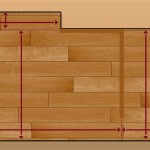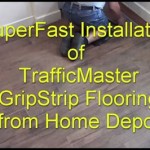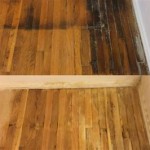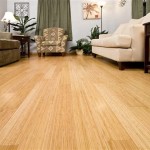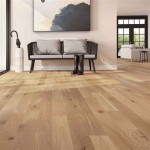Strand Carbonized Bamboo Flooring: Reviews and Complaints
Strand carbonized bamboo flooring has risen in popularity as a sustainable and aesthetically appealing alternative to traditional hardwood floors. Its unique manufacturing process, involving the compression of bamboo fibers into a dense, durable material, sets it apart. The carbonization process, which involves heating the bamboo to achieve a darker color, further alters its properties and appearance. While many homeowners are drawn to its eco-friendly aspects and distinctive look, it's crucial to examine both the positive reviews and the common complaints associated with this flooring option before making a purchase decision.
This article aims to provide a comprehensive overview of strand carbonized bamboo flooring, exploring its advantages and disadvantages as reported by users and industry experts. It will delve into the specific issues raised in reviews and complaints, offering insights into the potential challenges associated with its installation, maintenance, and overall performance.
Durability and Scratch Resistance
One of the primary factors influencing consumer satisfaction with any flooring material is its durability. Strand woven bamboo, in general, boasts a high Janka hardness rating, often exceeding that of many traditional hardwood species. This inherent hardness is due to the unique manufacturing process, which compresses the bamboo fibers under intense pressure. However, the carbonization process can, in some cases, slightly reduce the overall hardness of the bamboo. This is because the heating process involved in carbonization can weaken the fibers to a degree. As a result, some reviews indicate that strand carbonized bamboo flooring may be more susceptible to scratches and dents compared to its uncarbonized counterpart.
Complaints regarding scratching often stem from households with pets, children, or high foot traffic. Although advertised as durable, the surface of strand carbonized bamboo can be marred by sharp claws, dropped objects, or the dragging of furniture. The depth and visibility of these scratches can vary depending on the quality of the finish applied to the flooring. A high-quality, multi-layer finish is generally more resistant to scratches, but even the best finishes are not impervious to damage. Furthermore, the darker color of carbonized bamboo can sometimes make scratches more noticeable compared to lighter-colored flooring options.
Reviews highlighting positive experiences with durability often mention the importance of preventative measures. These include the use of area rugs in high-traffic areas, the application of felt pads to the feet of furniture, and regular sweeping or vacuuming to remove abrasive particles. The choice of finish also plays a crucial role. Polyurethane finishes are commonly used for bamboo flooring due to their durability and water resistance. However, some manufacturers may use less durable finishes to reduce costs, leading to increased susceptibility to scratches and wear.
In conclusion, while strand woven bamboo is generally a durable flooring option, the carbonization process can potentially impact its scratch resistance. Consumers should carefully consider the finish quality and implement preventative measures to minimize the risk of damage. Researching specific brands and reading reviews from other users can also provide valuable insights into the real-world performance of particular products.
Installation Challenges and Subfloor Requirements
The installation process for strand carbonized bamboo flooring is similar to that of traditional hardwood flooring. However, certain factors can contribute to installation challenges and subsequent complaints. One of the most common issues revolves around the subfloor. Bamboo flooring requires a level, dry, and structurally sound subfloor to ensure proper installation and prevent warping or buckling. Any imperfections in the subfloor, such as unevenness or moisture problems, can lead to significant problems down the line.
Complaints often arise when installers fail to properly prepare the subfloor prior to laying the bamboo. This can involve neglecting to level the surface, ignoring signs of moisture, or failing to adequately secure the existing subfloor material. As a result, the bamboo flooring may become uneven, develop gaps between planks, or even buckle due to moisture absorption. These issues can be costly to repair and may require complete replacement of the affected areas.
Another common complaint relates to acclimation. Bamboo flooring needs to acclimate to the relative humidity and temperature of the installation environment for a specified period, typically ranging from several days to a week. This allows the bamboo to expand or contract to its equilibrium moisture content, minimizing the risk of dimensional changes after installation. Failure to properly acclimate the flooring can lead to gaps, buckling, or warping as the bamboo adjusts to its new environment.
Reviews highlighting successful installations often emphasize the importance of hiring experienced installers who are familiar with bamboo flooring. These professionals understand the specific requirements for subfloor preparation, acclimation, and proper fastening techniques. They can also identify potential problems before they arise, ensuring a smooth and trouble-free installation process. Furthermore, carefully following the manufacturer's instructions is crucial for a successful installation. These instructions typically outline the recommended subfloor preparation methods, acclimation period, and fastening techniques.
Therefore, proper subfloor preparation and acclimation are critical for a successful installation of strand carbonized bamboo flooring. Homeowners should invest in professional installation and ensure that the installer adheres to the manufacturer's guidelines to minimize the risk of future problems.
Maintenance and Moisture Sensitivity
Maintaining strand carbonized bamboo flooring is generally straightforward, but its sensitivity to moisture is a common source of concern for homeowners. While bamboo is naturally resistant to some degree of moisture, excessive exposure can lead to swelling, warping, and even mold growth. This is particularly true in areas with high humidity or where spills are not promptly cleaned up.
Complaints related to moisture sensitivity often stem from kitchens, bathrooms, or basements, where humidity levels are typically higher. Splashes of water from sinks or showers can penetrate the seams between planks, leading to swelling and discoloration. Similarly, leaks from appliances or plumbing can cause significant damage if not addressed immediately. The darker color of carbonized bamboo can sometimes make water stains more noticeable, further exacerbating the problem.
Another common maintenance-related complaint revolves around the finish. Over time, the finish on bamboo flooring can wear down, making it more susceptible to scratches and moisture damage. Regular cleaning with appropriate cleaning products is essential to maintain the finish and protect the underlying bamboo. However, harsh chemicals or abrasive cleaners can damage the finish, accelerating its deterioration. Furthermore, excessive use of water during cleaning can also contribute to moisture problems.
Reviews highlighting successful maintenance practices emphasize the importance of regular sweeping or vacuuming to remove dirt and debris. Spills should be cleaned up immediately with a damp cloth. Using a pH-neutral cleaner specifically designed for bamboo flooring is also recommended. Avoiding excessive water during cleaning and ensuring proper ventilation in damp areas can help prevent moisture problems. Refinishing the flooring every few years can also help to restore the finish and protect the bamboo from wear and tear.
Therefore, while strand carbonized bamboo flooring is relatively easy to maintain, its sensitivity to moisture requires careful attention. Promptly addressing spills, using appropriate cleaning products, and maintaining proper ventilation are crucial for preventing damage and ensuring the longevity of the flooring.

Aquaseal 7mm W Pad Strand Carbonized Distressed Water Resistant Engineered Bamboo Flooring 7 5 In Wide Ll

Bamboo Flooring Pros And Cons Forbes Home

Strand Carbonized Bamboo Floor Contemporary Kitchen Portland By Wellmade Coverings Int L Inc Houzz

Strand Woven Bamboo Floor Natural Colour Carbonized Tiles Raw Material Flooring China Made In Com

Bamboo Flooring Parquet Wide Engineered Wood Home Decoration China Floor Tiles Made In Com

Aquaseal 7mm Pad Strand Carbonized Distressed Engineered 72 Water Resistant Bamboo Flooring 7 5 In Wide Floor Ers

Carbonized Bamboo Floor Fireproof Construction Strand Woven Flooring Anti Mildew E0 Environmental China Tiles Made In Com

Bamboo Flooring Ll Sforce Commerce Cloud 4 1

Eco Friendly E0 2024 High Density Carbonized Strand Woven Bamboo Flooring China Indoor Made In Com

Renature 3 8 In Strand Carbonized Engineered Bamboo Flooring 5 13 Wide Ll
Related Posts




